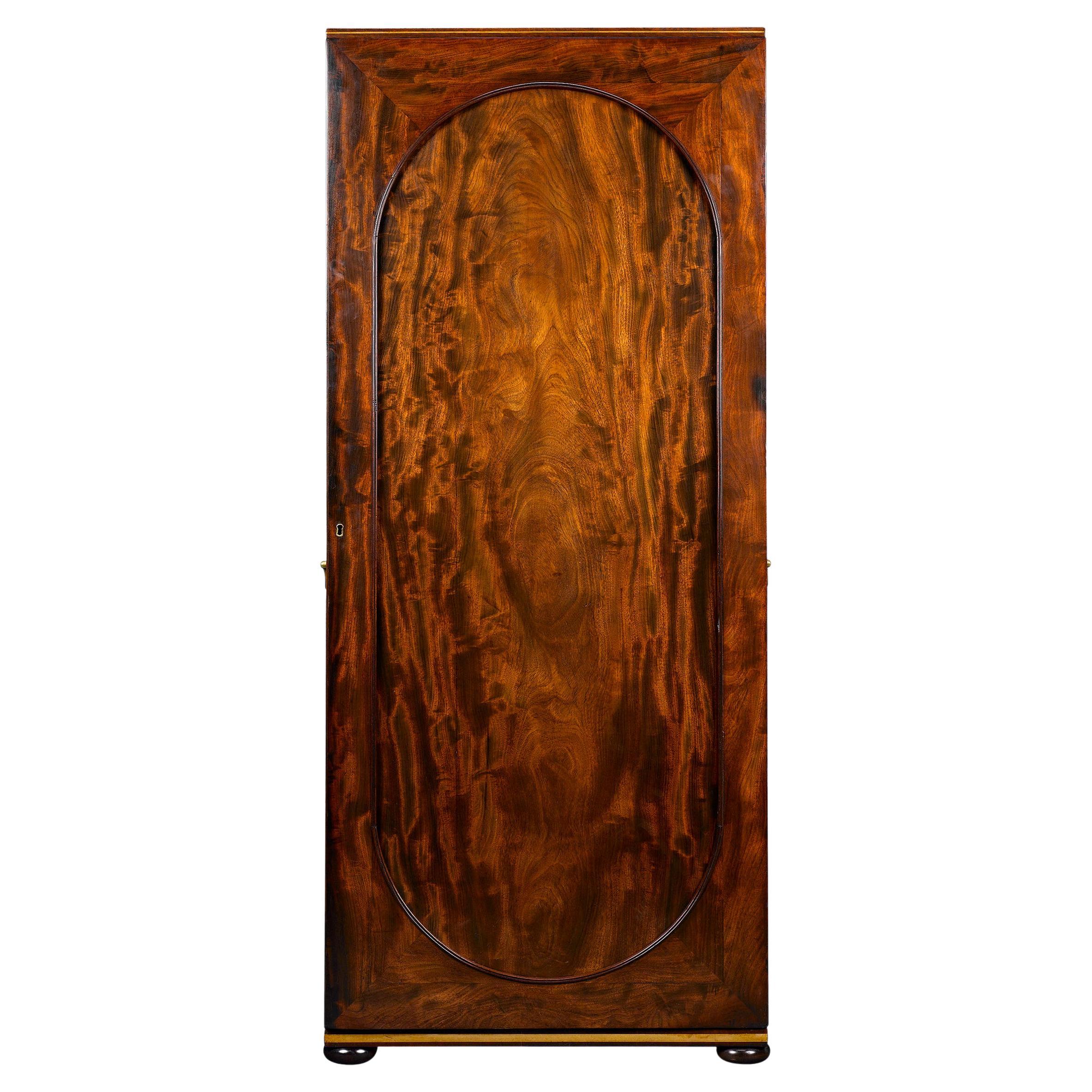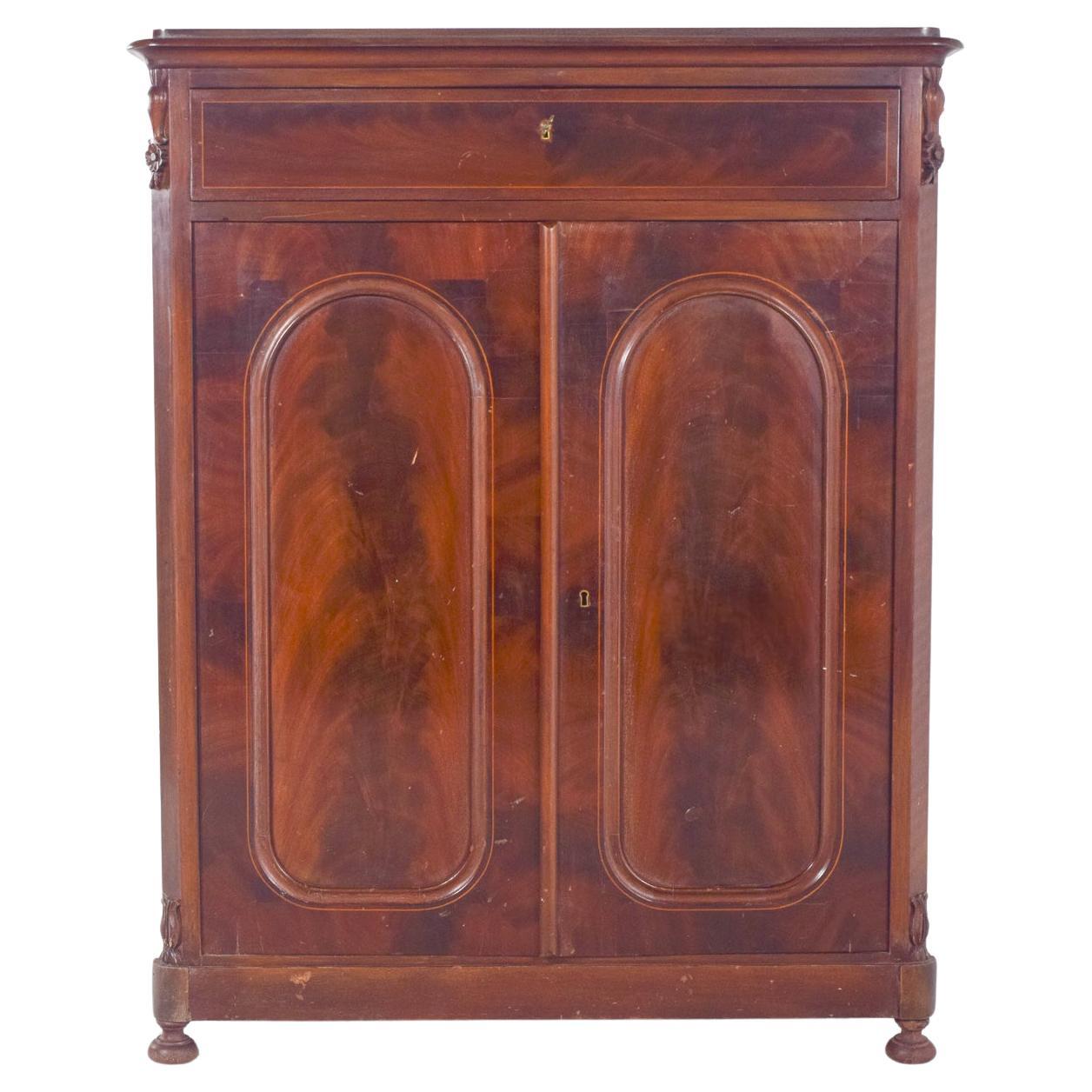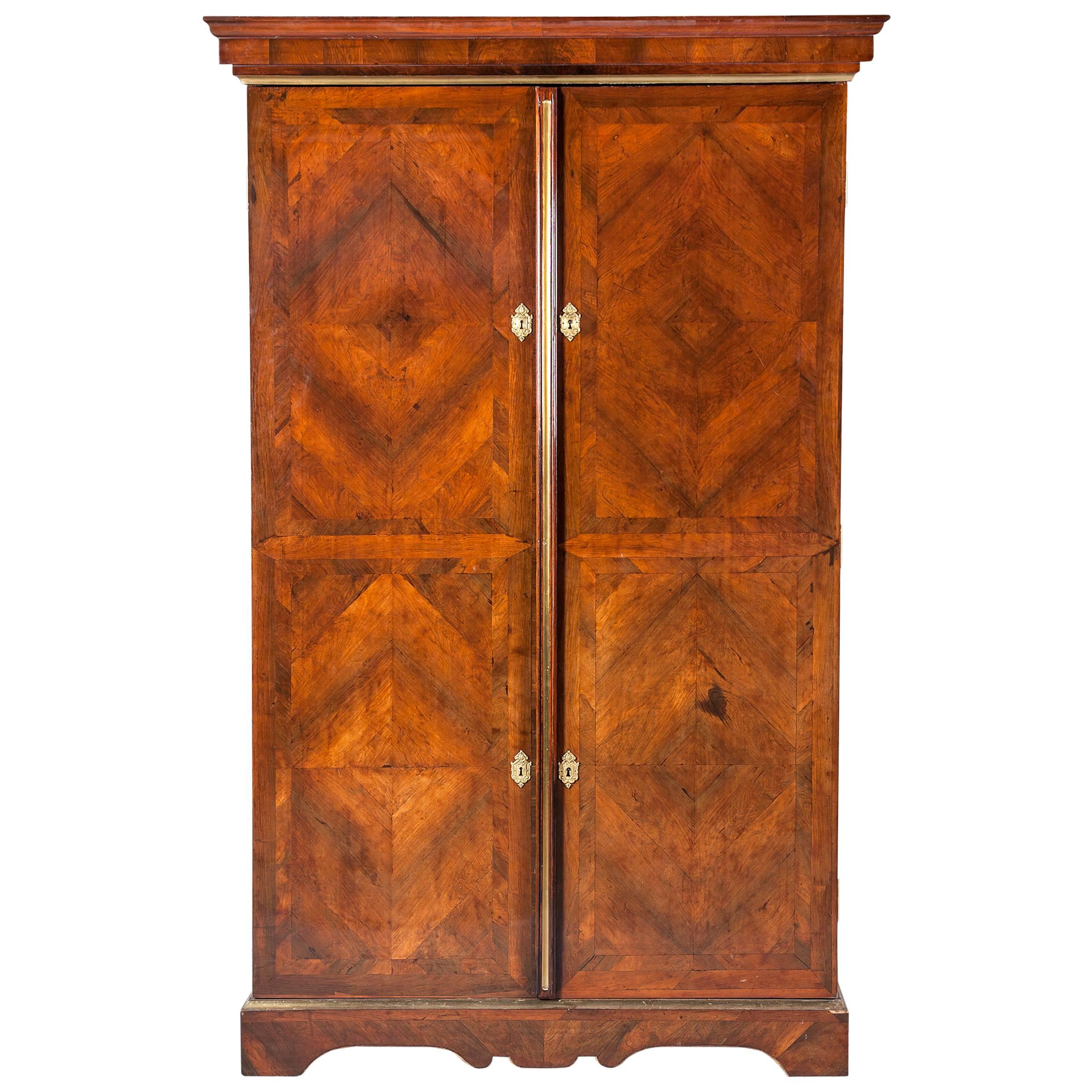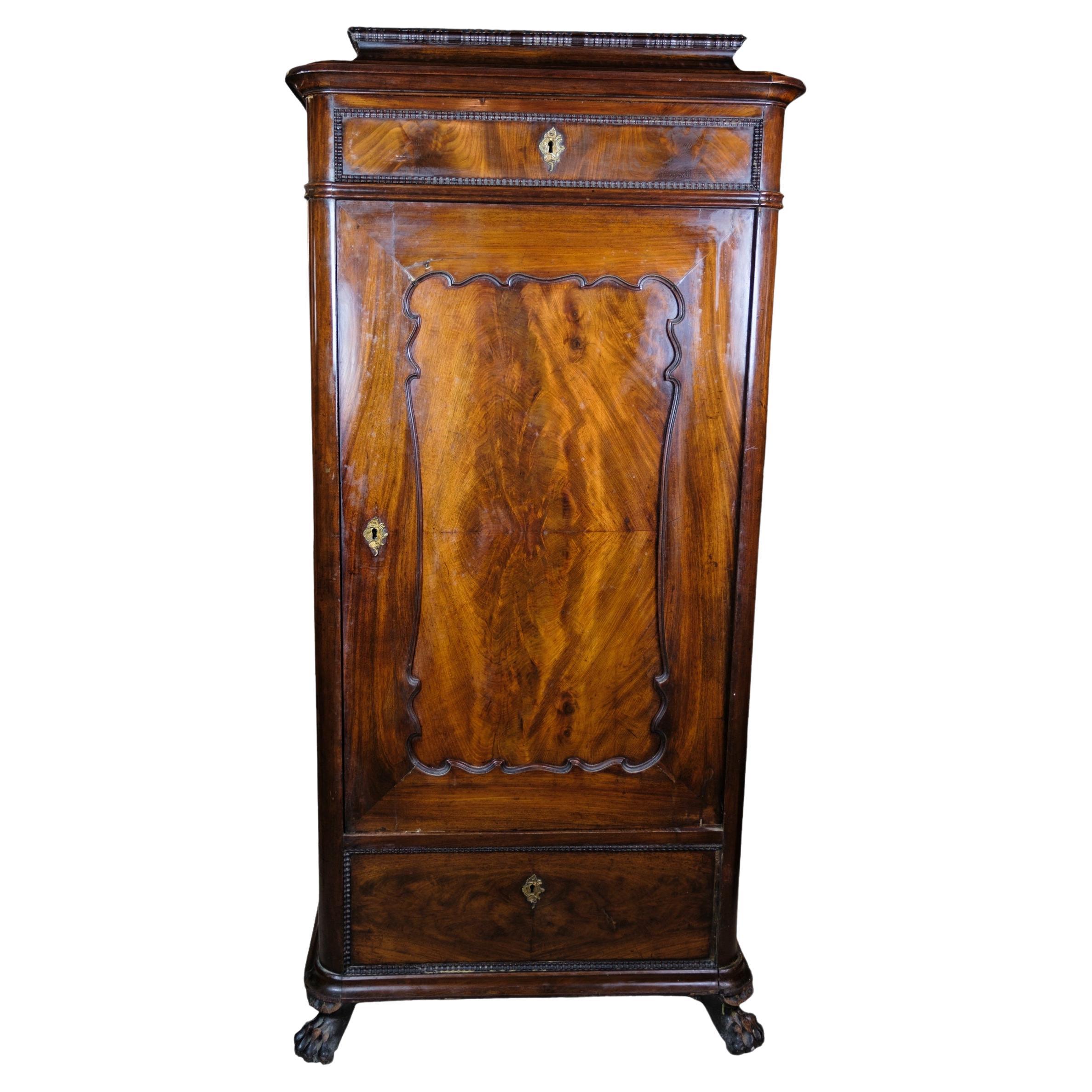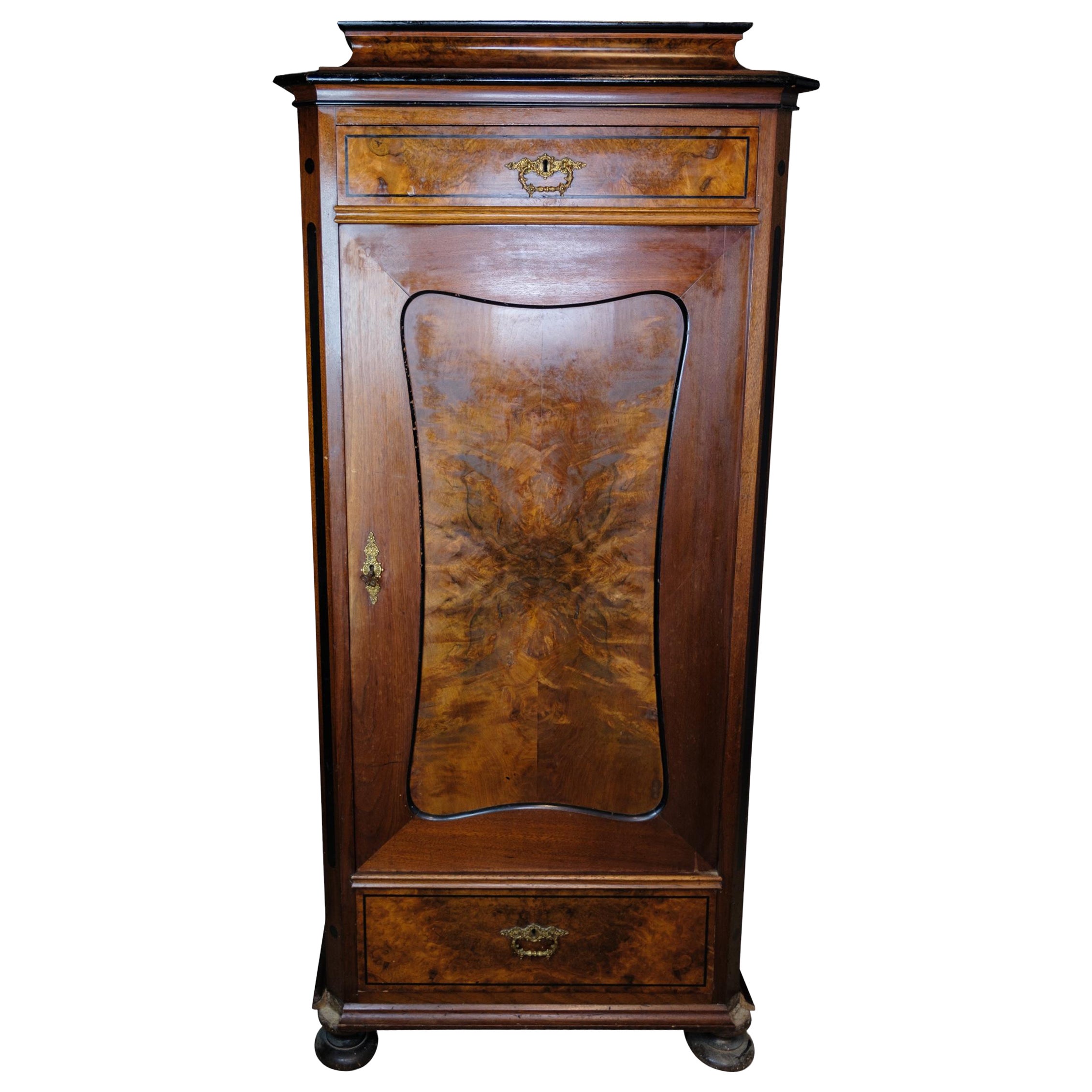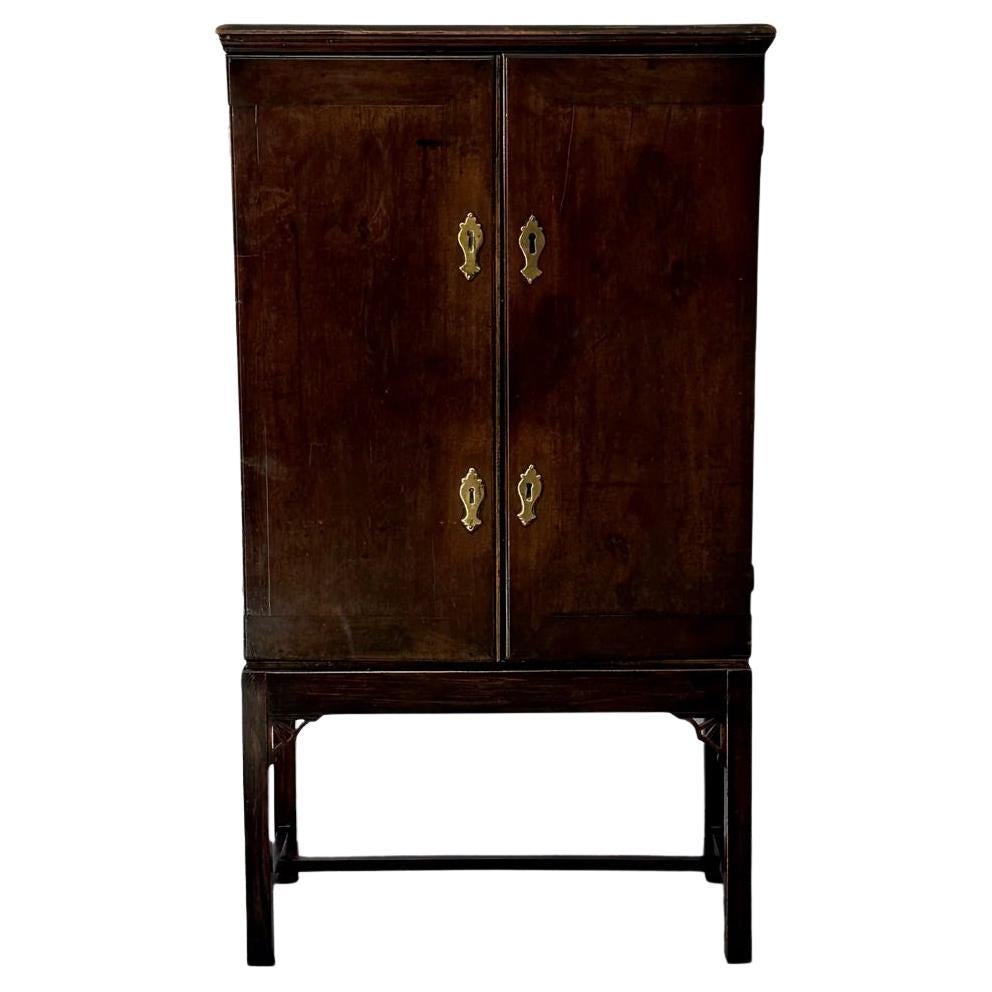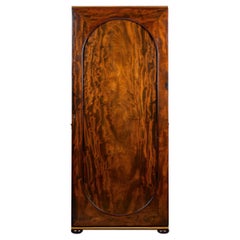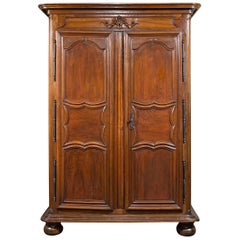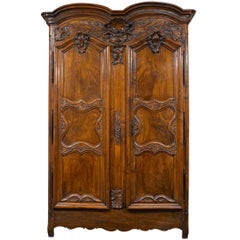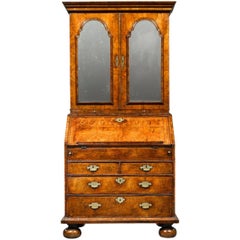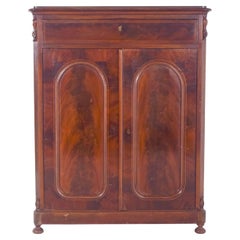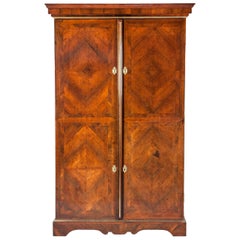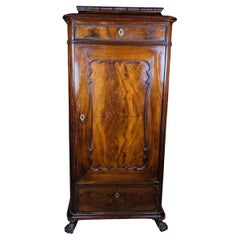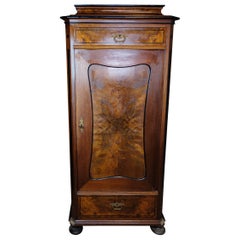Want more images or videos?
Request additional images or videos from the seller
1 of 5
English Upright Cane Cabinet
$28,500
£21,648.08
€24,945.93
CA$40,135.06
A$44,495.65
CHF 23,384.20
MX$544,553.75
NOK 292,044.87
SEK 274,113.33
DKK 186,205.85
About the Item
This English cane cabinet exhibits classical style and impeccable design. Crafted of lustrous Cuban mahogany, this upright case features a beautifully paneled door which opens to reveal a three-tiered cane rack for 30 walking sticks. This ingenious design allows the rack to slide forward as the door opens, so that all of one's prized stick is within easy reach, and the mirrored back assures that all canes are in view. Set upon bun feet and accented with brass bands, this cabinet is a must for the serious collector.
Circa 1880
27 7/8 wide x 10 3/4” deep x 65 5/8” high
- Dimensions:Height: 65.63 in (166.71 cm)Width: 27.88 in (70.82 cm)Depth: 10.75 in (27.31 cm)
- Materials and Techniques:
- Place of Origin:
- Period:
- Date of Manufacture:Circa 1880
- Condition:
- Seller Location:New Orleans, LA
- Reference Number:Seller: 30-19371stDibs: LU891135666572
About the Seller
5.0
Recognized Seller
These prestigious sellers are industry leaders and represent the highest echelon for item quality and design.
Established in 1912
1stDibs seller since 2010
111 sales on 1stDibs
Typical response time: 9 hours
- ShippingRetrieving quote...Shipping from: New Orleans, LA
- Return Policy
Authenticity Guarantee
In the unlikely event there’s an issue with an item’s authenticity, contact us within 1 year for a full refund. DetailsMoney-Back Guarantee
If your item is not as described, is damaged in transit, or does not arrive, contact us within 7 days for a full refund. Details24-Hour Cancellation
You have a 24-hour grace period in which to reconsider your purchase, with no questions asked.Vetted Professional Sellers
Our world-class sellers must adhere to strict standards for service and quality, maintaining the integrity of our listings.Price-Match Guarantee
If you find that a seller listed the same item for a lower price elsewhere, we’ll match it.Trusted Global Delivery
Our best-in-class carrier network provides specialized shipping options worldwide, including custom delivery.More From This Seller
View AllMahogany Upright Cane Cabinet
Located in New Orleans, LA
Classical style and impeccable design distinguish this English upright cane cabinet. Crafted of lustrous Cuban mahogany, this case is comprised of a beautifully paneled door which op...
Category
Antique 19th Century English Cabinets
Materials
Brass
19th Century French Provincial Armoire
Located in New Orleans, LA
This fine French provincial double door armoire is beautifully crafted of fine walnut. Adorned with elegant, Rococo-inspired molding and featuring exceptional well-preserved, origina...
Category
Antique 19th Century French Rococo Wardrobes and Armoires
Materials
Walnut
French Provincial Double Door Armoire
Located in New Orleans, LA
This majestic French walnut armoire is a stunning example of the Provincial style. Standing nearly nine feet high, this rare armoire featuring splendid rocaille carvings above its do...
Category
Antique 18th Century French French Provincial Wardrobes and Armoires
Materials
Wood, Walnut
18th Century English Secretary
Located in New Orleans, LA
Queen Anne period furnishings such as this walnut secretary are incredibly rare and important examples of English cabinetmaking. This secretary is of the most outstanding caliber, boasting desirable double bonnet, mirrored cabinet doors...
Category
Antique 18th Century English Queen Anne Secretaires
Materials
Walnut
19th Century Dutch Bureau Bookcase
Located in New Orleans, LA
This magnificent and important Dutch mahogany bureau bookcase, exuberantly carved and adorned with superb figural carvings, impressive scrolled feet and elaborate applied decoration....
Category
Antique 19th Century Dutch Other Bookcases
Materials
Mahogany
Mahogany Bureau Cabinet After Thomas Chippendale
By Thomas Chippendale
Located in New Orleans, LA
This extraordinary Irish bureau cabinet was crafted based on a design for a desk and bookcase drawn from Thomas Chippendale’s famed 1762 edition of The Gentleman and Cabinet-Maker's ...
Category
Antique 18th Century Irish Chippendale Cabinets
Materials
Mirror, Mahogany
You May Also Like
Antique English Tall Cabinet
Located in Lisboa, Lisboa
Tall, antique cabinet. With a classic design, it has details worked in high relief on the doors and sides, giving it a distinctive character. The lower part consists of two doors tha...
Category
Early 20th Century English Romantic Cabinets
Materials
Wood
Large French Cabinet
Located in Hudson, NY
Large French cabinet from a castle in northern France, near the Belgian border.
Category
Antique 1820s French Cabinets
Materials
Wood
$25,000
Tall Cabinet in Polished Mahogany from the 1850s
Located in Lejre, DK
Tall cabinet of polished mahogany in beautiful antique condition with 2 drawers and a door with shelves from the 1850s.
Measurements in cm: H:155 W:6...
Category
Antique 1850s Danish Cabinets
Materials
Mahogany
$1,516 Sale Price
20% Off
Tall Cabinet Made In Polished Walnut From 1850s
Located in Lejre, DK
High cabinet of polished walnut, nice antique condition with 2 drawers and a door with shelves from the 1850s
Measurements in cm: H:155 W:67 D:43.5
Category
Antique 1850s Danish Other Cabinets
Materials
Walnut
18th Century Estate Cupboard
Located in Los Angeles, CA
18th-century estate cupboard featuring original brass hardware and a rich patina. The stand is a later addition, likely from the early 20th century, complementing the piece's timeles...
Category
Antique 1790s English Cupboards
Materials
Brass
Early 19th Century Secretary
Located in Stahnsdorf, DE
Empire Secretary, Germany, 1820
A magnificent Empire-style secretary crafted in walnut veneer over coniferous wood, with ebonized accents and partial gilding. This piece showcases t...
Category
Antique Early 19th Century German Empire Secretaires
Materials
Walnut
More Ways To Browse
English Kitchen
Antique Canes
Bun Feet Cabinet
Cane Furniture England
Antique Mirror Kitchen Cabinets
8 Panel Door
English Mirror Cabinet
Antique Three Panel Mirror
English Style Kitchen Cabinets
Mahogany Collectors Cabinet
Used 5 Panel Doors
Cane Doors
Mahogany Cabinet With Mirror Back
Antique Walking Canes
Antique 5 Panel Door Doors
Antique 5 Panel Doors
5 Panel Mirror
Walking Sticks
